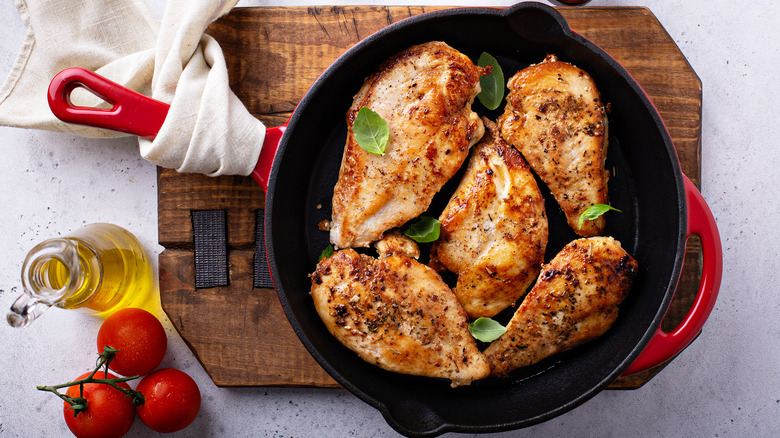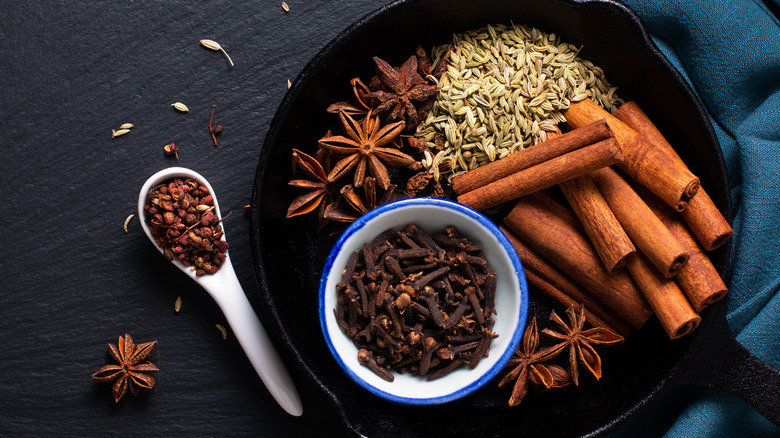Why You Need To Clean Your Skillet Between Batches Of Spicy Food
Batch cooking stands as a time-saving marvel, streamlining meal preparation for the busy individual. For example, Giada De Laurentiis' recommendations for batch cooking include versatile menu staples like rice and vegetables. Yet, amid this culinary efficiency, an issue often emerges; the residue of spices left behind in the skillet. For lovers of spicy food, the oversight of not wiping out these remnants between batches can unravel the seamless process of batch cooking.
As batches progress, the subtle buildup of spices in the skillet becomes more than a mere aesthetic concern. This layer of residue has a tangible impact on the smell and flavor of the food as spices left in the pan that are introduced to heat time and again will burn, giving off an acrid, bitter, and unpleasant aroma and taste.
Beyond its interference with the flavor profile, the presence of burnt spice residue poses a problem in maintaining the desired consistency of food. Batch cooking relies on the ability to replicate flavors seamlessly. Any deviation can disrupt the harmony of planned meals. Simply wiping out the spices between each batch with a paper towel becomes not just a matter of hygiene but a strategic step in upholding the very essence of batch cooking; reliable uniformity in taste.
How to prevent spices from burning
To avoid burning spices during the cooking process in general, opt for low to medium heat settings. Employing unnecessarily high cooking temperatures is among the most common mistakes people make when cooking Indian food and other aromatic cuisine types. High temperatures can rapidly lead to the scorching of delicate flavors. If toasting whole spices or seeds, use a dry pan and ensure constant stirring to release aromatic qualities without risking burning.
A useful technique involves mixing ground spices with a small amount of oil or fat before adding them to the dish. This not only creates a protective barrier against direct heat but also facilitates the uniform dispersion of spice flavors. When sautéing or frying with spices, constant stirring is essential to prevent hot spots and uneven cooking, ensuring that spices are uniformly exposed to heat. Additionally, consider adding spices to a flavorful base, such as sautéed onions or garlic, to provide a buffer against direct heat exposure.
Understanding the cooking times for different spices is pivotal. Some spices can withstand longer cooking periods, like cinnamon or clove, while others are more delicate. Adjusting your cooking times accordingly allows you to infuse flavors gradually without risking the burning of more sensitive spices. By adopting these practical techniques, you can elevate the flavors of your dishes, striking a balance between intensity and subtlety without the undesirable consequence of burnt spices.

